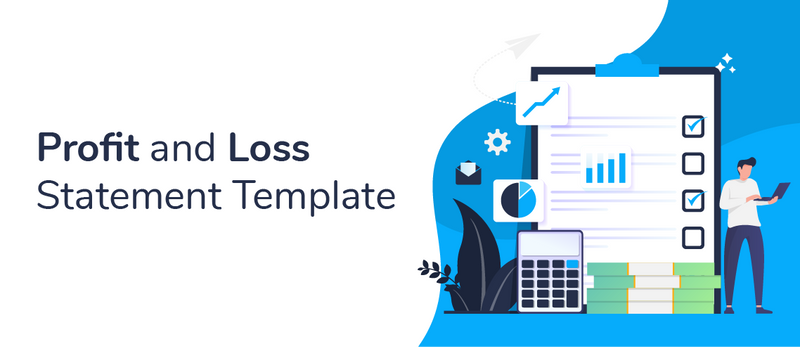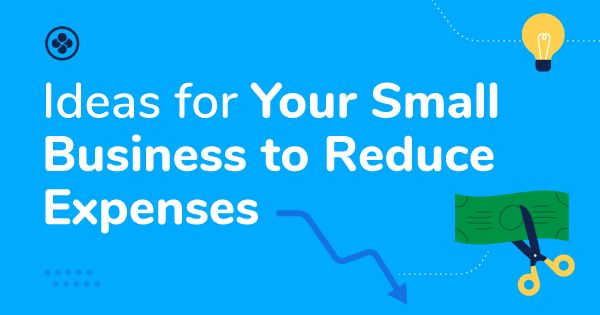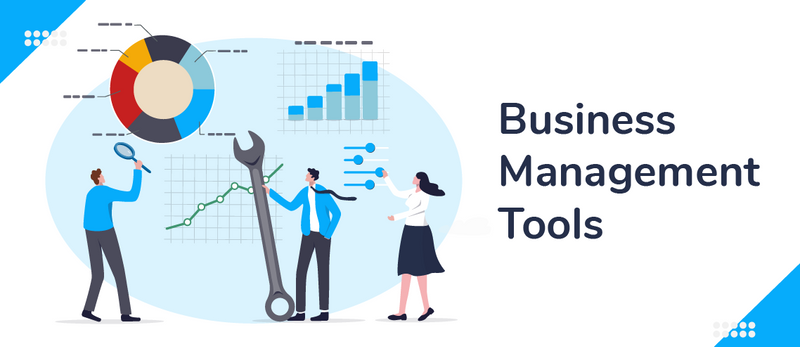Profit and Loss Statement Template & Guide for Small Businesses

The viability of your company depends upon its financial health. Closely reviewing your financial statements, including the all-important profit and loss statement (often called a ‘P&L’), will give you important insights into the direction your business is heading.
If you’re new to the business world — or if you aren’t sure what a profit and loss statement entails — this guide will help you understand this critical report.
What is a profit and loss (P&L) statement?
A P&L statement is one of the most important financial statements that a company prepares (others are the balance sheet and the cash flow statement).
A P&L statement summarizes the revenues, costs, and expenses acquired during a specified period. It’s usually prepared for a fiscal quarter or a year, though some businesses make one monthly.
A P&L statement is also known as an Income Statement, Revenue Statement, or Statement of Financial Performance.
Profit and Loss Statement Template
With the help of your P&L, you’ll be able to evaluate the financial health of your business. Use the template here for a quick boost of financial visibility.
How can a P&L statement help my business?
A P&L statement can help your business in many ways, including the following:
Breaks down all revenues and relevant costs/expenses
As an entrepreneur, you need a viable business strategy to survive the competitive commercial landscape. A P&L statement can help you understand whether your small business is profitable or if your business model is sustainable.
If the statement shows a profit, your business earns more than it spends. Conversely, a loss indicates that your business spends more than it earns.
But this document offers more information than whether a business is earning a profit or incurring a loss. P&L statements help businesses understand the financial condition of their companies by providing a complete financial overview with clear breakdowns of all revenues and expenses.
In this way, the P&L statement offers insight into whether the business generates enough revenue or turnover to cover all of its expenses, or whether the return on investment is high enough to meet current expectations.
Facilitates practical short-term decision-making
With more insight into their finances, business owners can make better decisions regarding their day-to-day operations. For example, entrepreneurs can identify their top- and lowest-earning revenue streams to allocate future investment, or find categories where spending can be reduced to cut expenses.
Helps with long-term business planning
Over time, P&L statements illuminate income and expense patterns, giving businesses an accurate estimation of their future financial position.
P&L statements provide answers to vital forecasting questions, such as whether a company will meet profit targets for the next quarter or whether its growth strategy is effective. But, more importantly, the document allows businesses to work on areas that impact their profitability and growth.
With the aid of P&L statements, financial forecasting can become more accurate, offering greater accounting integrity of the business and a more attractive outlook for investors.
A closer look at the P&L statement structure
There’s no one template for a P&L statement. However, it is typically broken down into three main categories:
1. Revenue
This section includes information about the business’s income, listing all of the revenue generated through sources such as:
- Sales
- Money received by selling assets
- Cash received from tax refunds
Revenue can be broken down into sub-categories as well; for example, including detail on in-store sales vs. online sales could provide useful information.
2. Expenses
This section of the P&L details the costs and expenses associated with running the business. This category can be further broken down into sub-categories; for instance, to isolate the Costs of Goods Sold (COGS) vs. the general operating costs of the business (OPEX).
The COGS section of the P&L details expenses incurred to sell a product or service. It’s an important aspect of P&L statements, as it generally constitutes a significant portion of the business’s expenses. Depending on the company’s business model, COGS may include the cost of materials, labor, machinery, or even delivering goods.
Revenue minus COGS represents the company’s gross profit and shows how much capital is left over for other expenses. On the other hand, OPEX details the costs of running a business not related to COGS, including:
- Payroll
- Advertising
- Training
- Building leases
- Utilities
- Equipment purchase
- Hardware and software
3. Net income
The net income is the business’s bottom line — the most crucial part of the P&L statement.
Net income is calculated after everything has been accounted for, including other operating expenses, taxes, interest, depreciation, the business owner’s salary, etc. However, there are several ways net income can be calculated. Earnings Before Interest and Tax (EBIT), for example, can be calculated by subtracting COGS and OPEX from Gross Profit.

How to analyze a P&L statement
Analyzing a P&L statement can help businesses to become more profitable and effective.
There are three possible scenarios to consider:
1. You made a profit
Making a profit is a good sign. However, every business owner’s goal is to boost the company’s profitability as much as possible. Therefore, it’s still in your best interest to find areas where you can cut costs further or boost revenue to increase profits.
2. You made a profit, but it was less than last year
Companies can have a year-to-year decrease in profit for a number of reasons (take the COVID-19 pandemic, for example). But a continuous downward trend should be considered a wake-up call. If net income keeps falling, it’s time to devise alternative business strategies.
3. You had a loss
Even large, successful companies can suffer losses. The detailed information in a P&L statement can help you understand what’s draining your capital, such as high operating expenses, or whether your priority needs to be generating more sales.
What your P&L statement doesn’t show you
At the same time, to get a realistic picture of the financial health of your business, you need to go beyond the P&L statement. This is because:
- A P&L statement only highlights your income, costs, and expenses. It doesn’t identify the assets, liabilities, and equity of the company.
- It doesn’t comment on the condition of any assets you hold (including items that may need to be repaired or replaced soon).
- A P&L statement shows the profit your business makes. However, it doesn’t show how much cash or cash flow is actually available for you to spend.
- Though P&L statements highlight revenue, they don’t necessarily show revenue that hasn’t yet been collected (depending on whether you use cash-based or accrual bookkeeping).
Getting started with your P&L
Preparing a profit and loss statement is critically important for small business owners, as the report enables you to understand your company’s financial position and make sound business decisions.
With the help of your P&L, you’ll be able to evaluate the financial health of your business.
JD enjoys teaching people how to use ZoomShift to save time spent on scheduling. He’s curious, likes learning new things everyday and playing the guitar (although it’s a work in progress).



